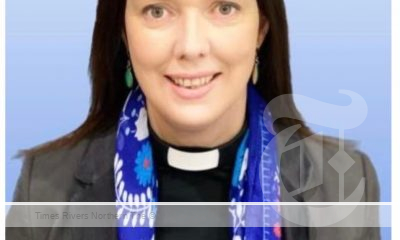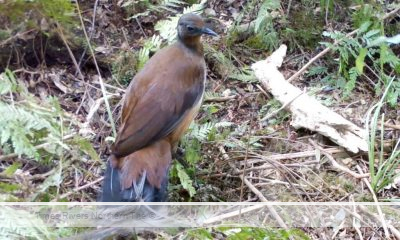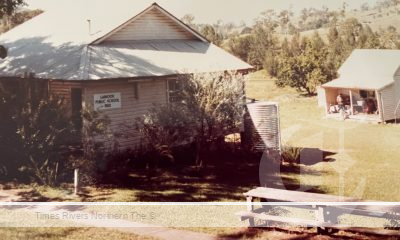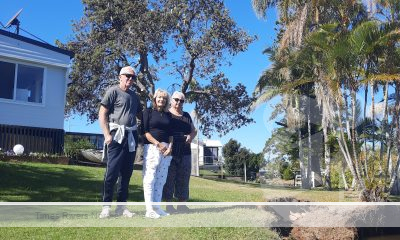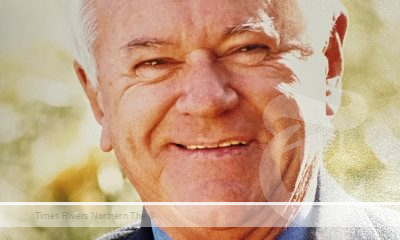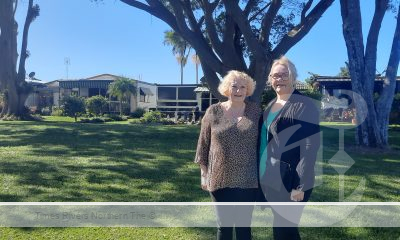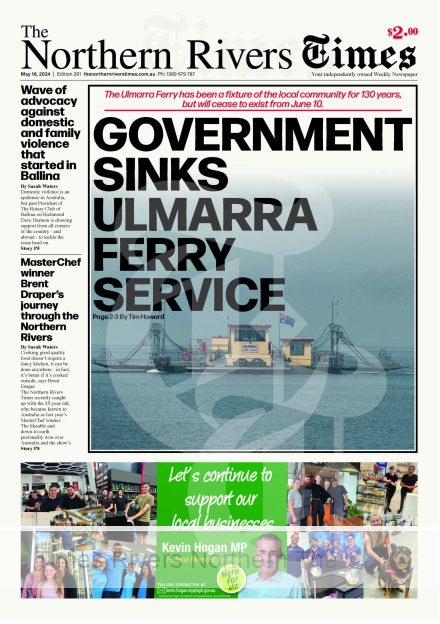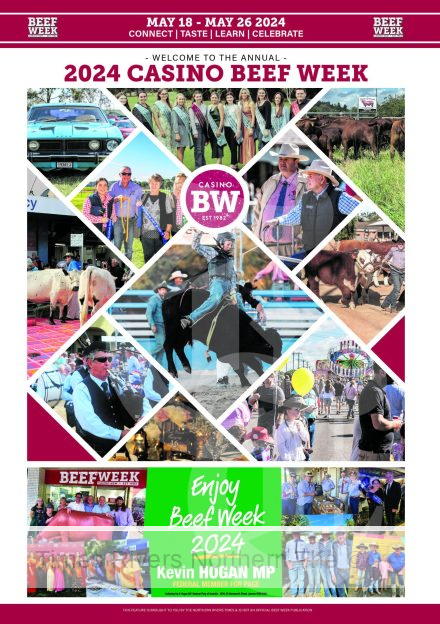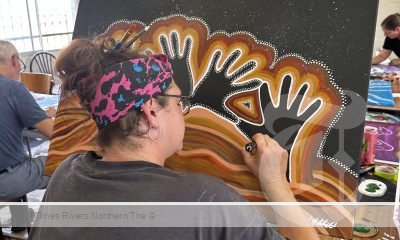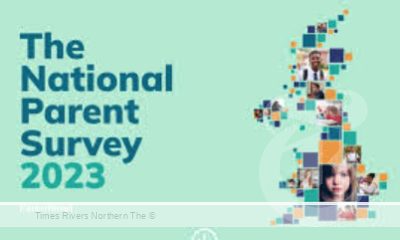HEADLINE: SAVING THE GLOSSY BLACK-COCKATOO
By Sarah Waters
CITIZEN scientists in the Northern Rivers are collecting vital data that is contributing to the preservation of the glossy black-cockatoo species.
More than 100 community members have documented sightings of the birds over the past year for The Glossies Northern Rivers project.
Advertisements

The project is a conservation partnership between WWF-Australia, NSW Saving our Species and Wildbnb Wildlife Habitat.
It started in May last year, after conservationists came to the realisation that little was known about the glossy black-cockatoos’ population distribution and movement across the Northern Rivers region.
An important part of the project involves citizen scientists or ‘Glossy Squad’ members reporting sightings of the birds.
Glossy Squad Project Manager Harry Hackett, from Wildbnb, said glossy black-cockatoos are listed as vulnerable in NSW, but the size of the population in the Northern Rivers is not understood.
 “In south-east Queensland and the Tweed there has been a lot of work done to monitor glossy populations through the Glossy Black Conservancy, and their Partners” Ms Hackett said.
“In south-east Queensland and the Tweed there has been a lot of work done to monitor glossy populations through the Glossy Black Conservancy, and their Partners” Ms Hackett said.
“But there is a gap in our understanding of the birds further south of the border – especially where they nest.
“What we do know is that these birds are facing massive threats through habitat loss.
“One of the biggest drivers for the project was that we need to collect data informing better understanding of the extent of the local population and their available habitat.
“We’re trying to establish a real-time status update for these birds to inform strategic actions supporting recovery of the species.”
The Glossy Squad have contributed crucial information on the birds’ whereabouts, their feed trees and nesting habitat.
Last year, a member of the group, reported seeing a pair of glossy black-cockatoos regularly visiting a tree near their home in the Tweed Valley.
When a team of ecologists followed up on the sighting, they discovered not only a pair of glossy black-cockatoos, but their nesting site.
It was the only active glossy black-cockatoo nest identified in the Northern Rivers last breeding season.
The discovery has allowed ecologists and conservationists to gain valuable insight into local nesting and breeding areas.
It will hopefully allow for the protection of these habitats.
Glossy black-cockatoos only lay a single egg when they breed, which is thought to be every one to two years – if the conditions are right.
A female will spend 30 days incubating her egg in the nest and then a further 12 weeks caring for her nestling until it’s ready to fledge.
Ms Hackett said glossies are ‘the ultimate ecological specialist’ and have had to contend with land clearing, fires, extreme weather events and even poaching for the black-market trade, which has put their species into further demise.
“They have a highly specific diet – they only feed on some species of she-oak, in this area specifically; Forest Oak, Black She-oak and Horsetail She-oak.
“The seeds contained within she-oak cones are miniscule and they rely on them for all their nutritional requirements.
“They will return to the same ‘feed tree’ (often ignoring nearby trees full of cones) but, we are still working to understand their feeding patterns and seasonal factors impacting the availability of their food resources.”
The birds also prefer to nest in 1.5 meters deep hollows, which can only be found in old, established eucalyptus trees (living or dead).
It is estimated the 2019-2020 fires wiped out 25 per cent of their range in south-east Australia, further contributing to an already displaced and fragmented population.
It takes more than 200 years for a tree hollow to form before it can potentially be used as a nesting habitat for a glossy black-cockatoo.
Ms Hackett said Wildbnb has worked with local landholders to install artificial nesting hollows and has so far installed 48.
“Identifying areas of critical habitat to be protected will assist land managers, public and private, in making good decisions for glossies through their land management practices.
“We also want to expand areas of glossy habitat ensuring corridor connectivity across the landscape.”
The Glossies Northern Rivers project are conducting post-fire feeding habitat survey modelling, led by Dr Daniella Teixeira at QUT and the Glossy Black Conservancy.
In the meantime, more community members in the Northern Rivers are encouraged to get involved with The Glossies Northern Rivers project, join the Glossy Squad and report sightings of the birds.
“A common anecdote we hear is ‘oh we used to see them lots, but not in recent years’.
“People are realising that we have to act now and that we can make an impact by working together.
“What people are observing in their little patch of the world is really important – citizen science has a huge role to play in the conservation of these birds.”
For further information about how to join the Glossy Squad visit: wildbnb.com.au
SIDEBAR:
Glossy black-cockatoos are one of Australia’s rarest cockatoos.
They are the smallest of Australia’s five black-cockatoo species at 45-50cm in length.
Although they are called ‘glossy’ they aren’t exactly glossy in appearance.
Male glossies have a brownish-black head colour, whereas the female glossies have distinctive, individually patches of yellow over their head and neck.
Adult males have a bright, solid red colour in their tail, while adult females have black with orange-yellow-red panels, often with black barring.
Glossy black-cockatoos don’t announce themselves as loudly or triumphantly as other black-cockatoo species and are generally elusive in nature.
FACTBOX: According to Birdlife Australia fewer than 8000 glossy black-cockatoos remain in the wild
across the country. Populations were once recorded as being in the tens of thousands.
A study by the Australian World Wildlife Fund found more than half of the forests and woodlands in
NSW have been lost since 1750.



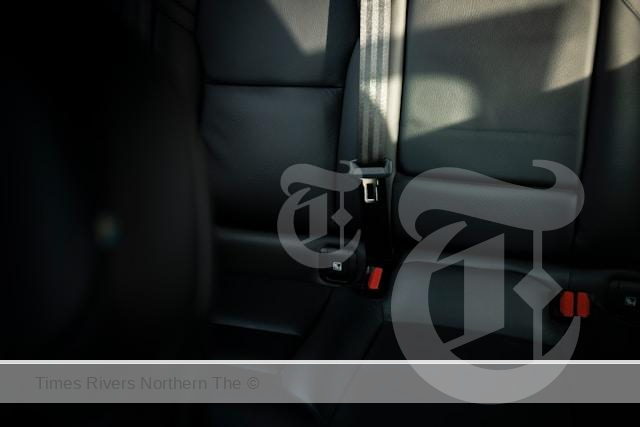

 Tweed Shire News2 years ago
Tweed Shire News2 years ago
 Motoring News1 year ago
Motoring News1 year ago
 COVID-19 Northern Rivers News3 years ago
COVID-19 Northern Rivers News3 years ago
 COVID-19 Northern Rivers News3 years ago
COVID-19 Northern Rivers News3 years ago
 Northern Rivers Local News3 years ago
Northern Rivers Local News3 years ago
 Health News3 years ago
Health News3 years ago
 COVID-19 Northern Rivers News3 years ago
COVID-19 Northern Rivers News3 years ago
 NSW Breaking News3 years ago
NSW Breaking News3 years ago








 “In south-east Queensland and the Tweed there has been a lot of work done to monitor glossy populations through the Glossy Black Conservancy, and their Partners” Ms Hackett said.
“In south-east Queensland and the Tweed there has been a lot of work done to monitor glossy populations through the Glossy Black Conservancy, and their Partners” Ms Hackett said.


